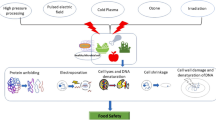Abstract
Alcohol ethoxycarboxylates (AEC) may be derived from alcohol ethoxylates (AEO) either by reaction of the nonionic surfactant with monochloroacetic acid (MCAA) or by oxidation. If MCAA is used, a -CH2COOH unit is added to the AEO. When an AEO is oxidized, the terminal -CH2OH group is selectively converted to -COOH. By use of proprietary carefully controlled oxidation technology, a variety of AEC surfactants have been synthesized. These surfactants exhibit good foaming and excellent line soap dispersion, and they allow formulation of high-quality personal-care products. Starter formulations have been investigated with AEC, both in shampoos and liquid hand cleaners. These formulations had the viscosity and foaming found in a survey of commercially available products. A shampoo and a liquid soap formulation with AEC were subjected to in-vitro assays to assess the potential for irritation to the skin or eyes. The assay results predict these formulations to cause minimal irritation, similar to commercial products.
Similar content being viewed by others
References
Cripe, T.A., U.S. Patent 5,233,087, Aug. 3, 1993, assigned to the Procter & Gamble Co.
Fried, H.E., U.S. Patent 5,162,579, Nov. 10, 1992, assigned to Shell Oil Company.
Fabry, B., Mild Surfactants—“Smooth” Chemistry Taken Word-for-Word, translated from Seifen-Öle-Fette-Wachse 117:3–7 (1991).
Borghetty, H.C., and C.A. Bergman, Synthetic Detergents in the Soap Industry, J. Am. Oil Chem. Soc. 27:88–90 (1950).
Linfield, W.M., Lime Soap Dispersants, in Detergency Theory and Technology, edited by W.G. Cutler and E. Kissa, Vol. 20, Marcel Dekker, Inc., New York, 1987, pp. 1–10.
Merrill, C.L., and D.L. Wood, U.S. Patent 5,034,158, July 23, 1991, assigned to Shell Oil Company.
Schmidt, W., NEODOL® Alcohols and Derivatives in Shampoos, Shell Chemical Technical Bulletin 1346–92, Shell Chemical Company, Houston, TX.
Raney, K.H., and H.L. Benson, The Effect of Polar Soil Components on the Phase Inversion Temperature and Optimum Detergency Conditions, J. Am. Oil Chem. Soc. 67:722–725 (1990).
Merrill, C.L., and D.L. Wood, U.S. Patent 5,035,838, July 30, 1991, assigned to Shell Oil Company.
Schmidt, W., W. Lilienthal, K.H. Raney, and S.T. Dubey, A Novel Dianionic Surfactant from the Reaction of C14-Alkenylsuccinic Anhydride with Sodium Isethionate, J. Am. Oil Chem. Soc. 71:695–703 (1994).
Olsen, D.K., and C.B. Josephson, Carboxymethylated Ethoxylated Surfactants, Department of Energy National Institute for Petroleum and Energy Research, Report No. 228, Bartlesville, OK, 1987, pp. 11–14.
Schultz, K., Fettalkoholoxäthylacetate (Fatty Alcohol Ethylacetate), translated from Seifen-Öle-Fette-Wachse 101:37–41 (1975).
Van Paasen, N.A.I., Alkylethercarboxylate: Hautfreundliche Rohstoffe für Kosmetische Anwendungen (Alkyl ethercarboxylate: A Raw Material with Skin Mildness for Cosmetic Applications), translated from Seifen-Öle-Fette-Wachse 109:353–355 (1983).
Schafer, D., and R. Schafer, U.S. Patent 4,808,239, Feb. 28, 1989, assigned to Alcon, Inc.
Harbell, J.W., K.A. Wallace, F. Marchesani, R. Stahl, P.B. Nyberg, E.V. Buehler, and R.D. Curren, The Use of Excised Corneas from Slaughterhouse Animals to Assess Potential Ocular Irritation from Consumer Products and Related Raw Materials, presented at the Congress on Cell and Tissue Culture, San Diego, CA, June 1993; abstract published in In Vitro Cellular and Developmental Biology 28:97A (1993).
Southee, J., L.K. Hall, and J. W. Harbell, Ocular Irritation Potential of Complex Surfactant Mixtures Evaluated In Vitro Using the Bovine Corneal Opacity and Permeability Assay, Proceedings, International Federation of the Societies of Cosmetic Chemists, Between Congress Conference, 1995, pp. 433–440.
Harbell, J.W., J.A. Southee, C.L. Cannon, P.J. Neal, J. Kubilius, and M. Klausner, Inter- and Intralaboratory Reproducibility of a Three Dimensional Human Epidermal Model—EpiDerm™, The Toxicologist 14:108 (1994).
Gautheron, P., M. Dukic, D. Alix, and J.F. Sina, Bovine Corneal Opacity and Permeability Test: An In vitro Assay of Ocular Irritancy, Fundam. Appl. Toxicol. 18:442–449 (1992).
Sandopan® Carboxylated Surfactants…Worlds of Formulating Possibilities, Product Bulletin 7-025/93, Sandoz Chemicals Corporation, Charlotte, 1993, pp. 2–3.
Author information
Authors and Affiliations
About this article
Cite this article
Schmidt, W.W., Durante, D.R., Gingell, R. et al. Alcohol ethoxycarboxylates—Mild, high-foaming surfactants for personal-care products. J Amer Oil Chem Soc 74, 25–31 (1997). https://doi.org/10.1007/s11746-997-0114-0
Received:
Accepted:
Issue Date:
DOI: https://doi.org/10.1007/s11746-997-0114-0




